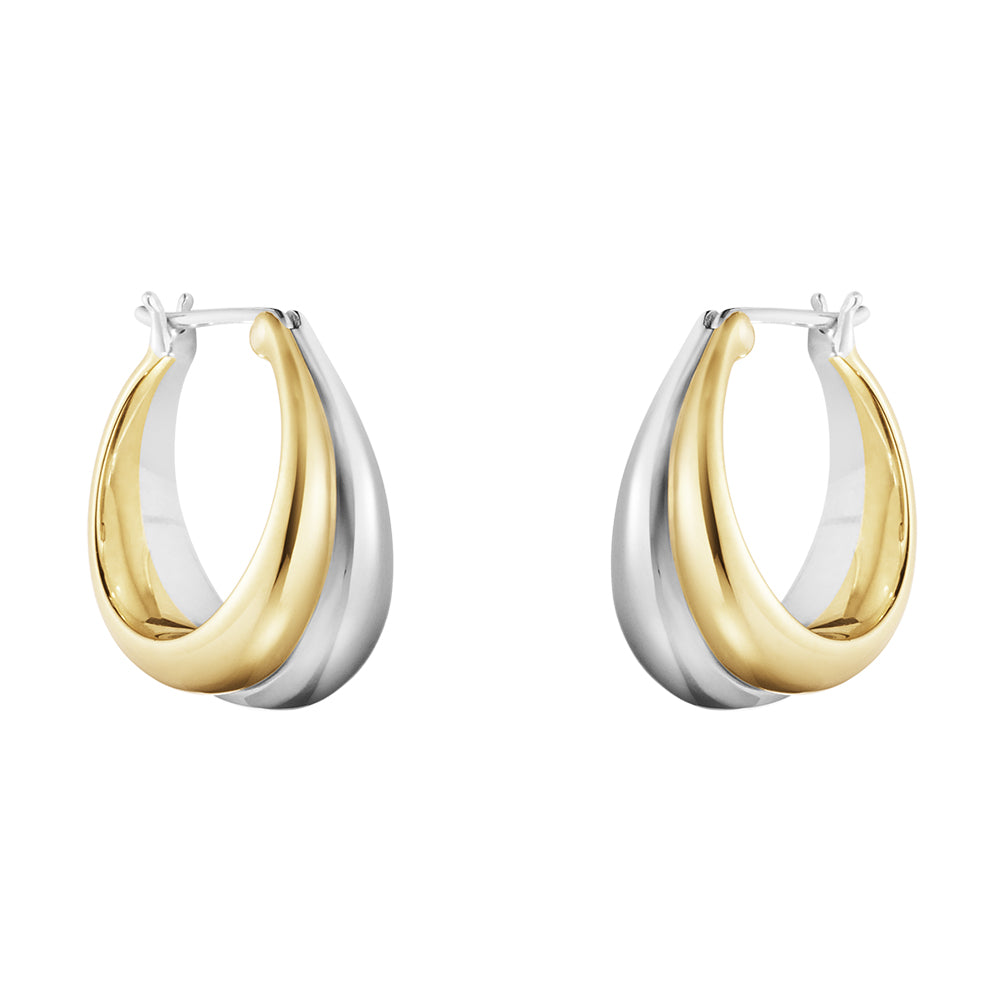
How To Get a Knot Out Of a Necklace
Introduction
the timeless frustration of a tangled necklace—those delicate links conspiring against you just moments before an important event. It's not merely an inconvenience; it's an assault on the elegance and memories those pieces hold. As jewelry enthusiasts, we've all faced this knot-orious culprit. But fear not! This comprehensive guide dives deep into the art of necklace knot removal, blending everyday wisdom with rare professional secrets and niche tips that typical tutorials often overlook. Plus, we'll introduce you to some carefully selected necklaces from RelaxFeelFashion's collection that are designed with real-world practicality in mind—minimizing the hassle of knots. Let's untangle this mystery together and reignite your sparkle.

The Mechanics of Knot Formation: Understanding the Culprits
Before we embark on the journey of liberation, it's essential to grasp why knots form in the first place. Delicate chains—serpentine, cable, or bead-based—are inherently susceptible to gravity, motion, and friction. These elements naturally draw links together, creating those pesky micro-loops that evolve into stubborn knots over time. Factors like wearing necklaces while sleeping, layering styles without proper stabilization, or improper storage can easily initiate this chain reaction (pun intended). Additionally, body oils and humidity generate tackiness between links, adding friction—a clue as to why baby powder or olive oil can be gentle yet effective solutions.
Smart Prevention—Nipping Knots in the Bud
As the adage goes, prevention is better than cure. Here are some strategic approaches to avoid future knots:
Thoughtful Storage Solutions
One of the most effective prevention methods is thoughtful storage. Inserting each chain through a drinking straw and clasping it prevents coiling and tangling. Individual pouches or hooks are also excellent options. Consider using travel jewelry cases or DIY corkboard hooks to store each necklace hanging straight. This simple step can significantly reduce the chances of knots forming. Learn more about jewelry storage techniques from Jewelers of America.
Conscious Wear Habits
Your wearing habits can also make a difference. Avoid sleeping in your necklaces, as even micro-movements can twist chains enough to create knots. When layering, consider adding a charm on the clasp to tether and stabilize the chains. This small adjustment can prevent those unwanted tangles. Explore more about jewelry care from GIA.

Conventional and Unconventional Tools for Knot Removal
When knots do strike, having the right tools can make all the difference. Here's a look at both conventional and unconventional weapons in your arsenal:
Lay Flat, Don’t Pull
All experts agree: lay the knotted necklace flat on a smooth, hard surface like glass or a lacquered tabletop. Never hang it, as gravity works with you, not against you in this position.
Pointed Prodding: The Needle Method
A sewing needle, safety pin, straight pin, or even the post of its own earring can be your best friend. Gently insert it into the center of the knot and twiddle. This action loosens the tension at the core. Reddit user ArtisanGerard wisely noted, “Use any pointy tools you like… The unsung hero of this process is using gravity as your main tool!” Professional jewelers also recommend rubbing the entire chain gently between your palms in a rolling back and forth motion. As Reddit’s Minkiemink (a professional jeweler) shared, “you will soon feel the chains magically loosening up.”
Friction Release: Rolling Between Fingers
Rub the knot between your thumb and forefinger, focusing on the outer loops. Micro-movements vibrate the knot loose—avoid tugging, as brutal force only tightens it further. Keep your lenses handy; magnifiers and light can save delicate designs.
Add a Slide: Lubricants & Powders
Baby powder or corn starch can make chains slip. Sprinkle, roll, pinch, and tease. Olive oil or baby oil can loosen a tough knot with just a drop at the core; however, be sure to clean thoroughly afterward. Windex, though quirky, is surprisingly effective. Dab, submerge, and vibrate in a container before rinsing.
Aftercare Clean-Up
If you've used oil, soak the necklace in warm water and mild dish soap, rinse, and pat dry. If you've used powder, wipe clean with a soft cloth. Finish with a polish specific to the chain metal, following guidelines from GIA or Jewelers of America.

Rare-Find Techniques for the Adventurous Soul
Looking for something fresh? Try these boutique approaches:
Chalk-Low Density Powder
Use baby chalk (gym chalk) instead of powder, especially when avoiding talc. Tap it into the knot edges, then roll between your fingers. This method works exceptionally well for ultra-thin chains.
Micro-Sonic Buzz
Place the knot in a clean Tupperware with a bit of solution, then position it on a low-speed vibrating appliance like a fan or toothbrush base. The micro-motion complements manual teasing, making this a unique yet effective technique.
Eco-Friendly Coconut Oil
Warm a drop of organic coconut oil and apply it with a cotton-tip. This gentle, plant-based solution satisfies natural-care enthusiasts and can be a game-changer for those seeking eco-friendly alternatives.
Jeweler’s Magnetic Board
Mini jewelry work boards with foam backing allow you to secure and hold chains in place. Use tweezers and a needle to untangle with precision. This method offers a high level of control and is particularly useful for intricate designs.

When to Press “Pause” & Seek Professional Help
Sometimes, a delicate necklace—especially those with fine pearls, gemstones, vermeil, or intricate designs—demands professional care. Here's when to consider seeking expert assistance:
Chanel-level Fine Jewelry Care
As Chanel’s Fine Jewelry Care guide emphasizes, check for loose silk threads and don't overlook clasps. If the chain is brittle or has precious beads, bring it into a boutique every 3–5 years for maintenance. Discover more about Chanel's jewelry care.
Visits to a Local Jeweler
Local professionals have specialized tools and lenses. Typical fees start at $15. Use platforms like Yelp or Google to find repair specialists with positive reviews. References from GIA or Jewelers of America can help build credibility. Find a reputable jeweler near you.
Match Necklace Picks from RelaxFeelFashion
Here are some smart, stylish picks from RelaxFeelFashion's collection designed to reduce knot-prone stress:
Delicate Minimalist Bar Necklace
This lightweight yet robust cable chain features a clasp-guarded design at the ends, making it ideal for everyday wear. It lies flat among clothes and carries a low risk of tangling. Explore this minimalist bar necklace.

Layered Pearl & Chain Combo
This design combines the solidity of pearls with finer segments. Smart layering reduces fine-chain friction, making it a practical choice for those who love layered looks without the hassle. Discover the layered pearl & chain combo.

Weighted Pendant Anchor Necklace
Featuring a center weight or charm nearest the clasp, this necklace prevents slip-flipping. The added weight stabilizes the chain, reducing the chances of knots forming. Check out the weighted pendant anchor necklace.

Travel-Smart Lariat with Safety Clasp
Designed for the on-the-go jewelry lover, this lariat goes through a straw or pouch, with a clasp that closes the chain instantly. It's perfect for travel and ensures your necklace stays tangle-free. Explore the travel-smart lariat.

Conclusion
Tangled necklaces are more than just an annoyance—they pose a threat to the sentimental value, financial investment, and aesthetic appeal of your jewelry. Armed with professional-grade techniques, from gentle rolling to niche sonic tricks, you can release tension, restore elegance, and prevent future snarls.
Remember to prevent first: store smart, avoid night-wear, and reinforce clasp weights. Play detective by identifying knot material and applying specific techniques—needles, powders, oils, even vibration. And when in doubt, use experts as your omega back-up, especially for heirlooms or intricate designs.
By mastering the art of knot removal and selecting thoughtful, knot-resistant pieces from RelaxFeelFashion, you'll wear your jewelry with confidence, care, and charm.
Happy untangling!
FAQ
Q: Can olive oil harm gold or silver chains?
A: No—but clean post-application with warm water + mild soap to remove residue and avoid tarnish.
Q: Baby powder vs corn starch?
A: Both work. Corn starch is talc-free and doctor-recommended for sensitive skin. It acts as a dry lubricant.
Q: Does vibration damage delicate pendants?
A: Not when low-speed. Immerse in a sealed container and avoid sudden shocks.
Q: How to prevent tangling when packing?
A: Thread each chain through straw or small tubing, clasp in place, then store flat in a jewelry pouch. This method works beautifully for trips.
Q: When is a professional essential?
A: If your necklace has gemstones, pearls, enamel, or is vintage/fragile, a jeweler ensures knot removal without damage.
We hope this guide has provided you with valuable insights and practical solutions for untangling necklace knots. By implementing these techniques and choosing knot-resistant designs from RelaxFeelFashion, you'll spend less time wrestling with knots and more time enjoying your jewelry. Happy styling!
Publicación anterior
How to Clean Silver Necklace: A Practical Guide
Siguiente publicación








